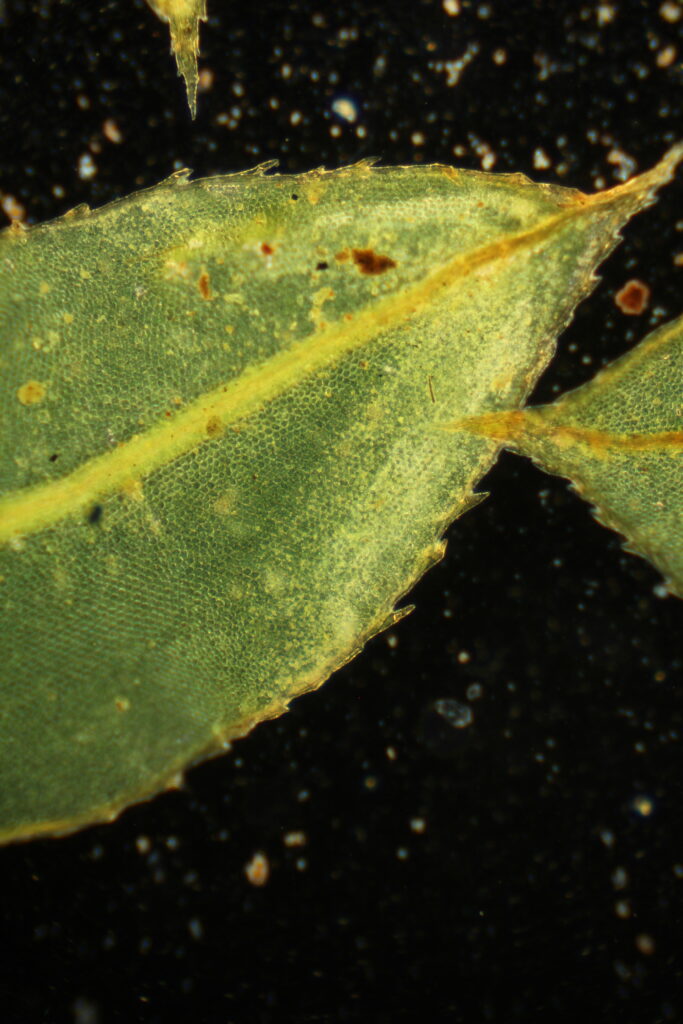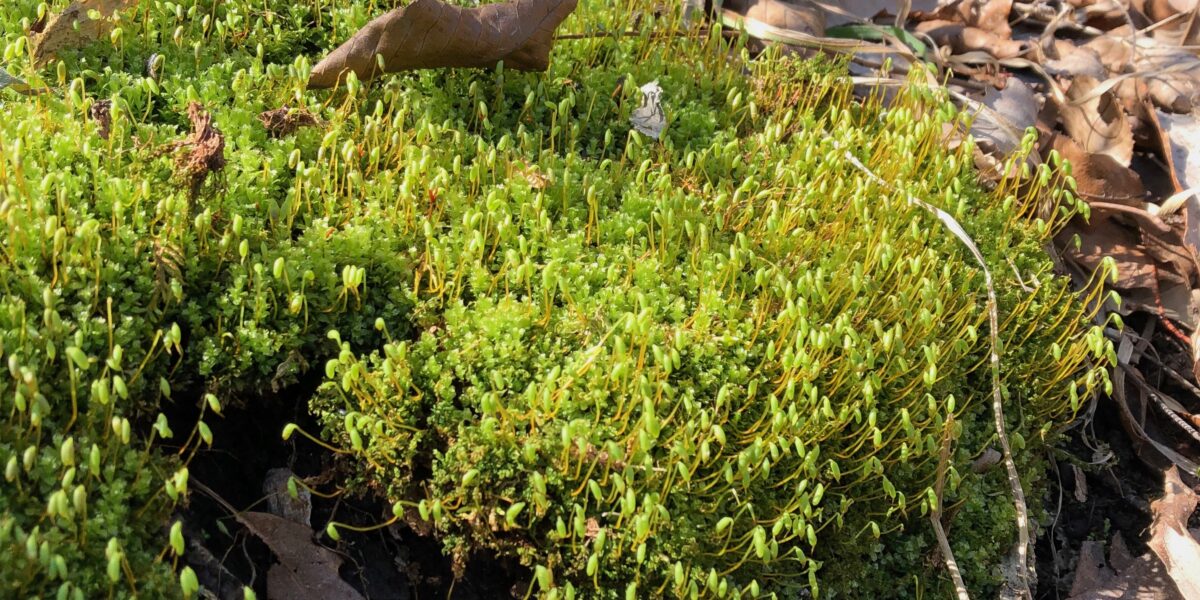An outstanding mat of Baby Tooth Moss in April with capsules just starting to mature. Lawrence Nature Park, Lawrence, KS photo: Brad Williamson
This is one of four articles on Kansas mosses that first appeared in the Kansas Native Plant Society’s Newsletter, vol. 44, Number 2.
Baby Tooth Moss
The unexpected beauty of a winter moss viewed through a hand lens more than 50 years ago sparked my lifelong, but casual interest in mosses. This interest is why I often carry a hand lens in the field hoping to recapture that long-ago epiphany. But until my retirement this interest primarily focused on the aesthetics of mosses–I didn’t really know much about their ecology or even their names.
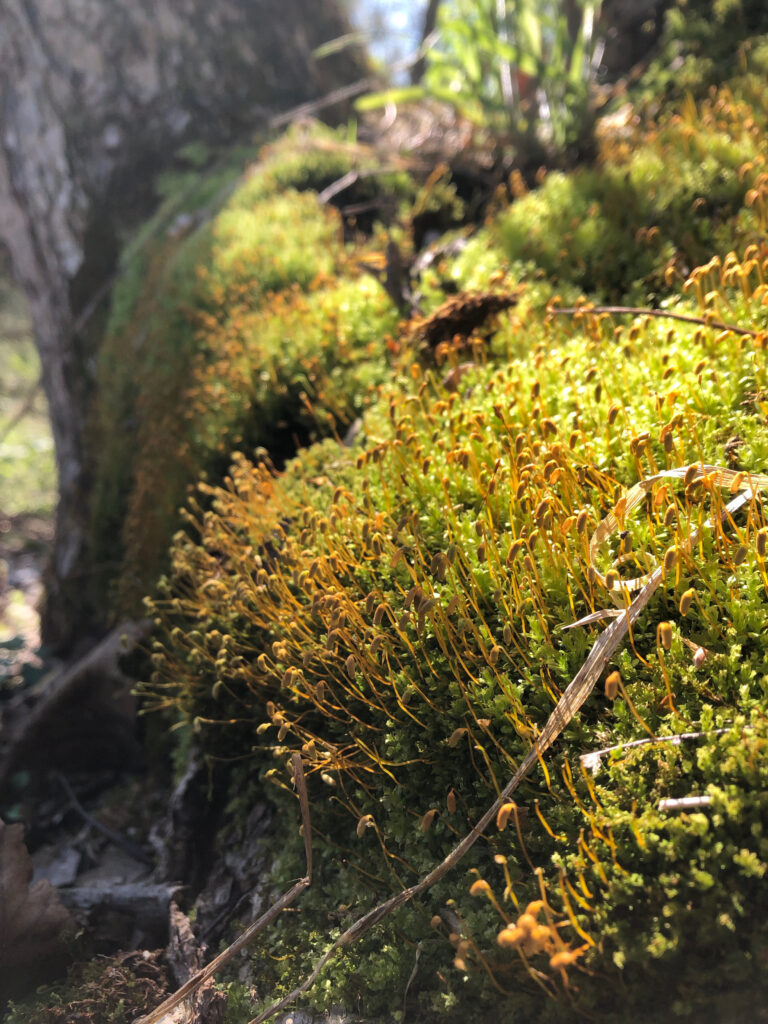
With retirement, I now have some time to focus more on the comings and goings of these often overlooked plants. I’m finding bryophytes and their stories to be a fascinating new world to explore. I tried to find some local experts to help guide the way but the folks that make their living studying bryophytes are hard to find these days. Fortunately, amazing new resources are available that make moss identification more accessible to the rest of us. There is great potential for the amateur to add to our knowledge of bryophytes in Kansas.
Winter or spring is one of the best times to begin your appreciation for mosses. Kansas mosses seem to thrive in the cooler months. Bryophytes respond to rain or the moisture of melting snow and provide a welcomed touch of green in an otherwise subdued winter landscape. Some mosses are truly small with leaves only 0.5 mm in length but others are much larger and more obvious at the right time of the year.
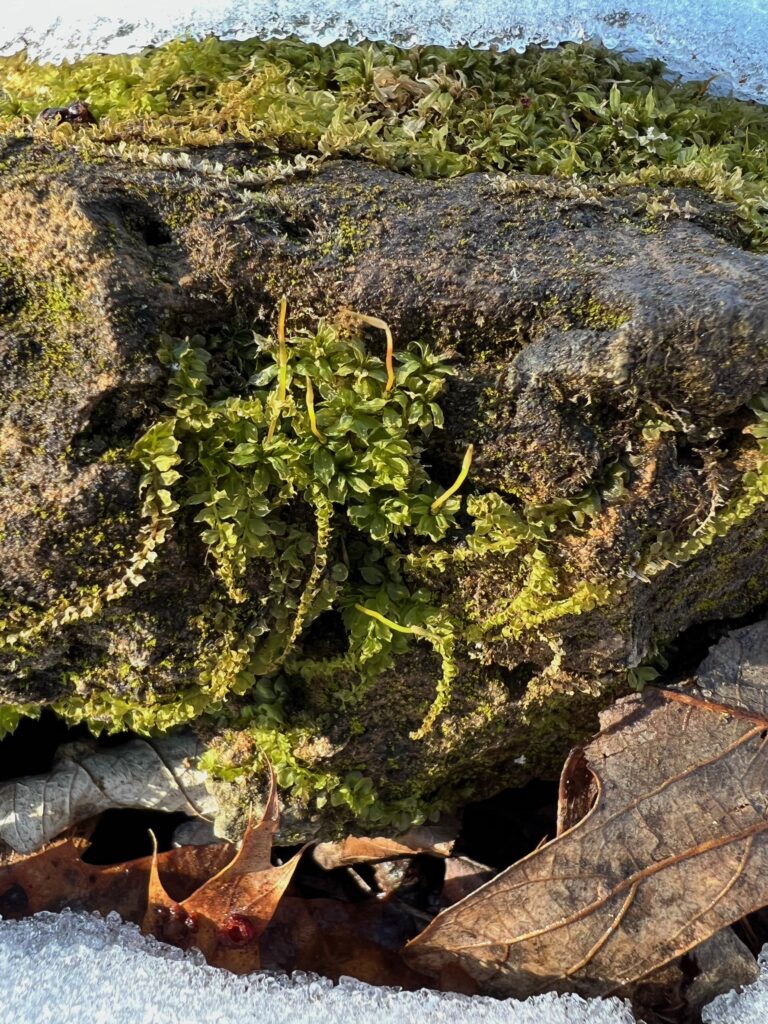
One such early spring moss, Baby Tooth Moss or Plagiomnium cuspidatum demands attention after almost any precipitation event. With fresh moisture it becomes hydrated, spreading its leaves to soak up sunlight as it soaks up newly available water. In the eastern half of the state, you will find this moss growing in lush, thick mats on the seepy soil next to paths or trails in wooded habitat. It also grows on the bases of trees, under shrub thickets, and occasionally on rock outcrops. Starting in February the moss starts to put up a miniature forest of yellow-green reproductive structures called sporophytes. These sporophytes turn a bright orange as the capsules mature providing a nice color complement to the yellow-green of the moss bed.
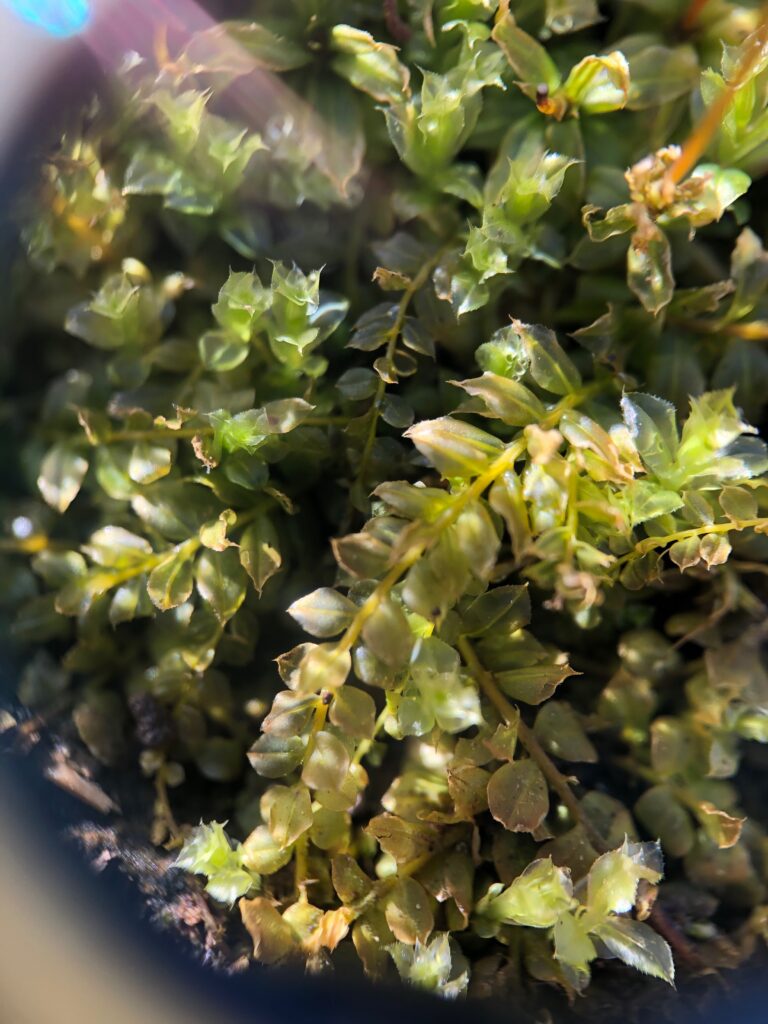
This moss is unusual in that it has both vegetative stems that lie along the ground with flattened, oval-shaped leaves on either side and reproductive stems with whorls of leaves rising vertically providing a base for the sporophytes. “Cuspidatum” refers to the toothed margins along the upper half of the leaves. The leaves of this moss are up to 3-4 mm in length with a strong midrib (costa) running down the center of the leaf creating a tip at the top of the leaf. There is another Plagiomnium in Kansas with leaves not quite as large as “cuspidatum” and the entire leaf margin is toothed. With a relatively inexpensive 10x hand lens/jeweler’s loupe you can see these characters to confirm the identification of this moss. (Google 10x jewelers loupe to find one you might want to purchase.)
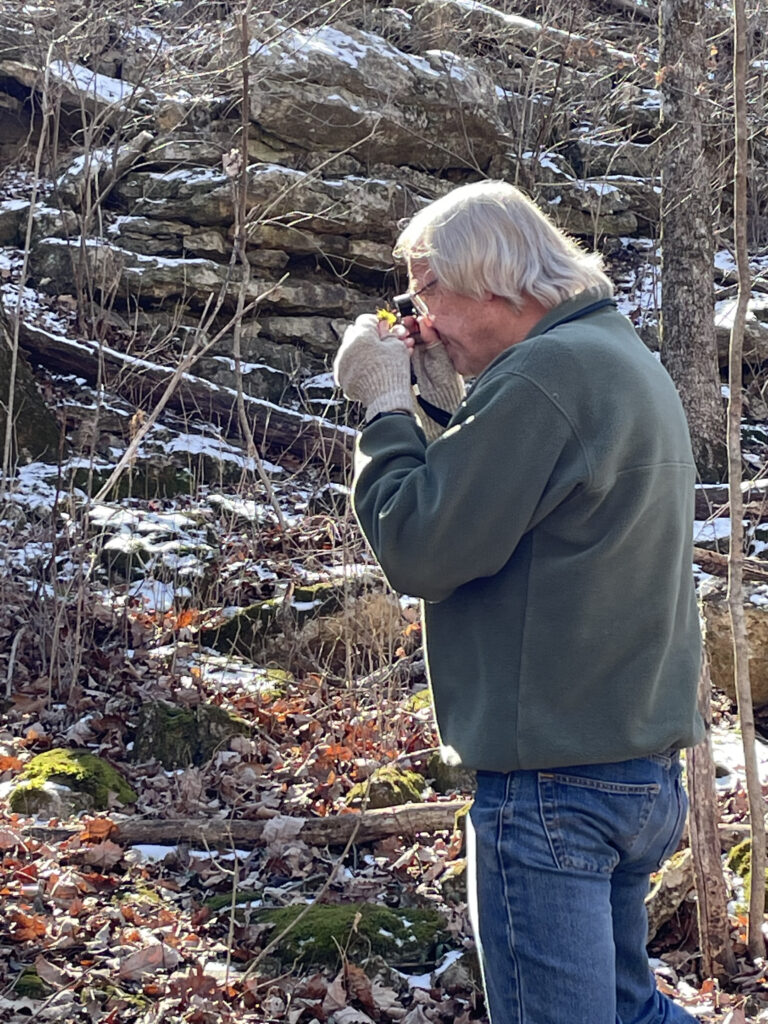
By the way, there is a technique for using one of these hand lenses. The idea is to get the lens really close to one of your eyes anchoring your hand and holding the lens firmly on your cheekbone. Then bring the specimen up close to about 2-3 centimeters from the front of the lens with your other hand now anchored onto your lens hand in order to bring the moss into focus. This seemingly convoluted procedure serves to maximize and stabilize your field of view through the lens. At the same time, closeness to the lens and the specimen creates a kind of sensory intimacy that provides a hint of what it might be like at the scale of mosses. Don’t hesitate to try and observe the moss in situ with the lens. Because your face is so close to the moss substrate in order to focus your field of view, you’ll find a unique set of sensory sensations that highlight the experience. You can feel the temperature change as you leave the world of the wind and enter the boundary layer. The light dazzles at the surface of the rock, and the rich aroma of the soil establishes additional sensory stimulation that helps to define the world of moss. Heady stuff. By the way, I wouldn’t recommend this close encounter for moss communities growing along trails where folks tend to walk their dogs. (Don’t ask how I know.)
